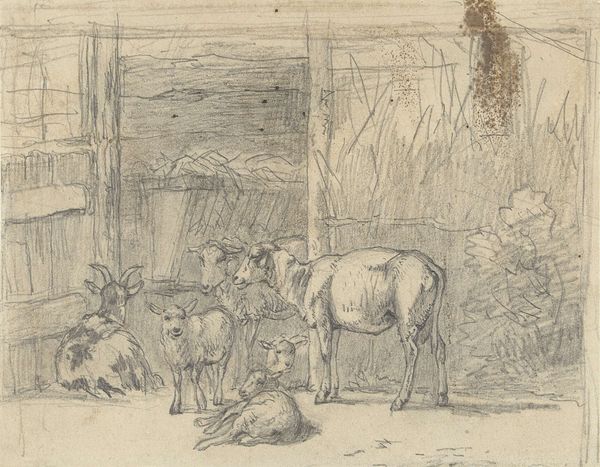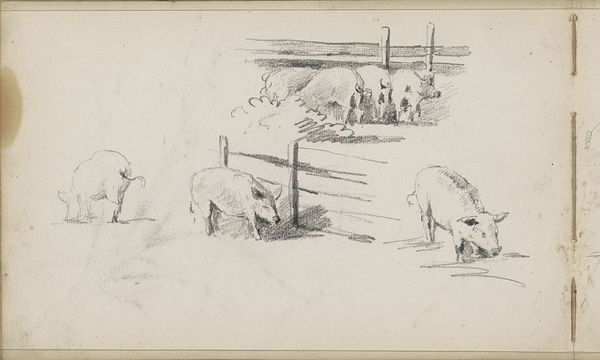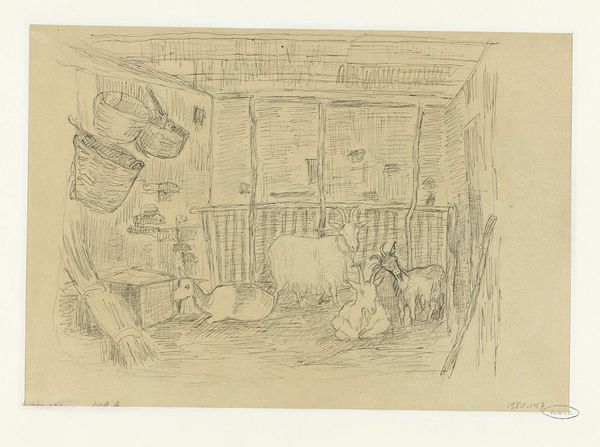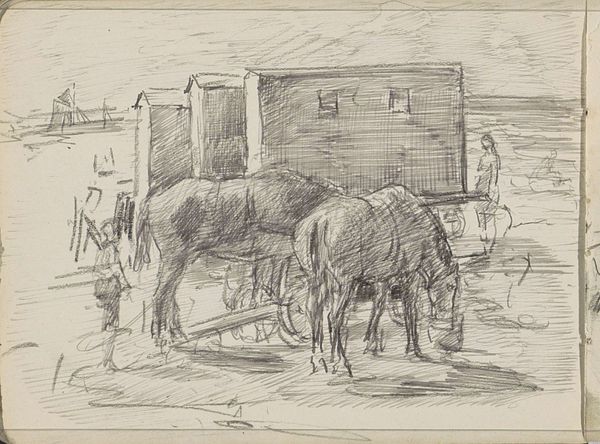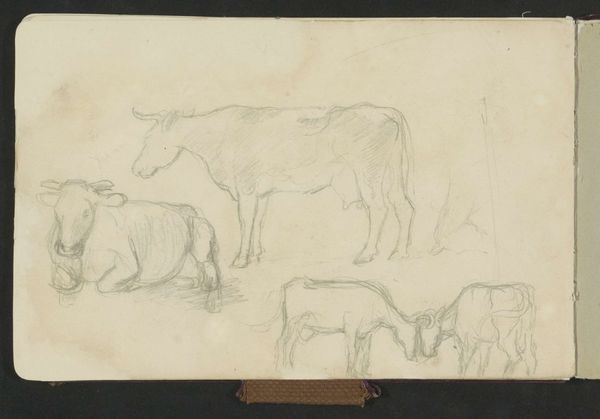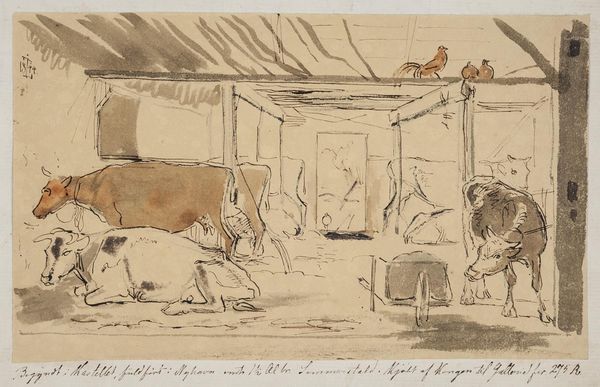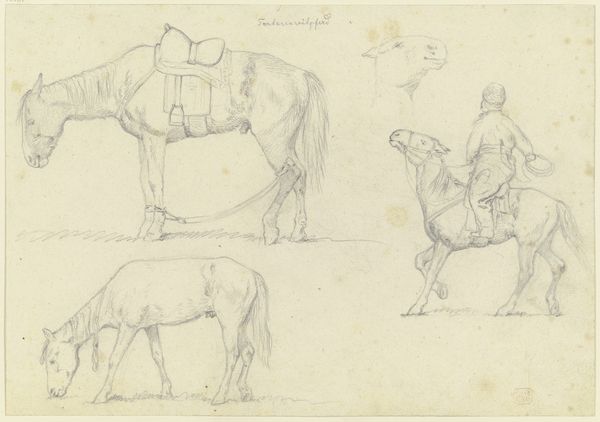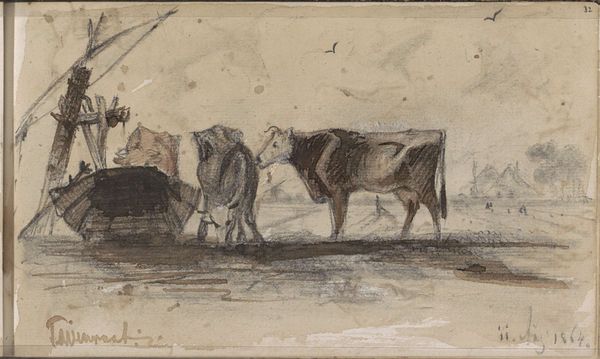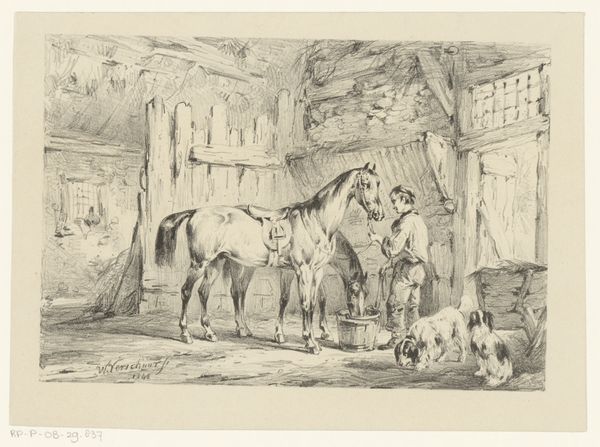
drawing, pencil
#
drawing
#
animal
#
impressionism
#
landscape
#
pencil
#
realism
Copyright: Public Domain: Artvee
Editor: Here we have Lovis Corinth's 1883 pencil drawing, "The Barn". It gives me the impression of a very immediate, on-the-spot sketch. What catches your eye? Curator: Immediately, I'm drawn to the means of production. Pencil on paper offers us a direct link to Corinth's hand and the conditions of 19th-century rural life. This wasn’t about high art, but documenting labor, materiality, and consumption in a working barn. Editor: Could you elaborate on that link to labor? Curator: Consider the time investment to create this drawing; the access required to witness such scenes. What can that reveal about the social context that would allow such extended artistic opportunities? We aren't merely viewing animals; we're seeing elements of a working economy of land and animal labour expressed in this drawing’s execution. Editor: It's fascinating to think about access and time as artistic resources in themselves! Did the limitations of pencil – say, compared to paint – influence how this was perceived? Curator: Absolutely. Pencil drawings often blurred the lines between fine art and more quotidian crafts, potentially influencing how such sketches were displayed and valued, at the time. Corinth captures the essence without embellishment. Look at the hatching. Think of the repetitive labor mimicked through drawing. Editor: So, we’re considering the artist's labour alongside the depicted labour? Curator: Precisely. One mirroring the other in material terms, inviting us to ponder social relationships embedded in production and perception. Editor: That connection adds a whole new dimension to the image for me. I came thinking of it just as farm animals. Curator: That is why material investigations can allow for very intimate relations to objects from the past and expand what art can encompass!
Comments
No comments
Be the first to comment and join the conversation on the ultimate creative platform.
